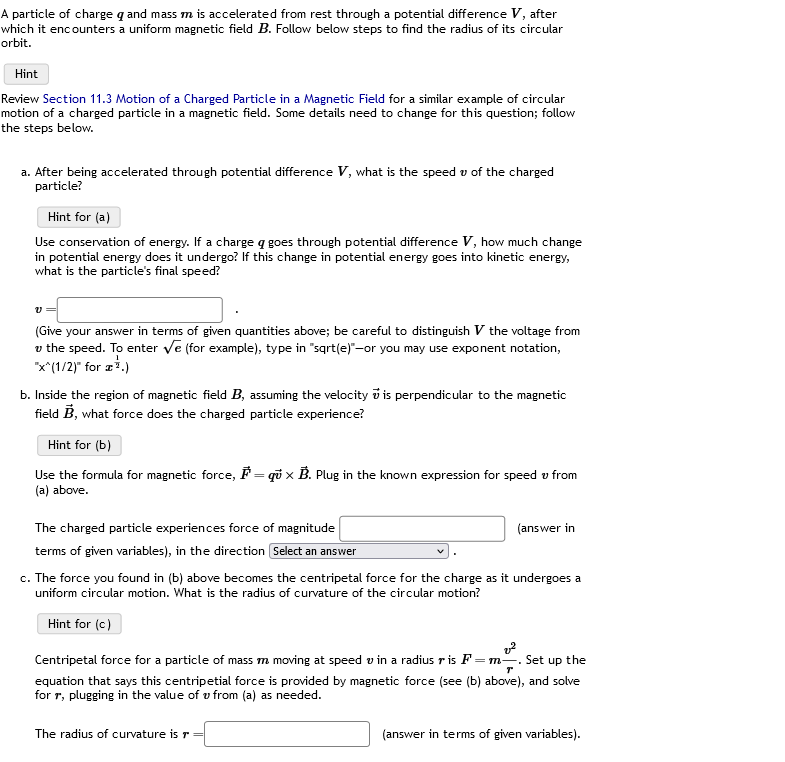Home /
Expert Answers /
Physics /
a-particle-of-charge-q-and-mass-m-is-accelerated-from-rest-through-a-potential-difference-v-after-pa566
(Solved): A particle of charge q and mass m is accelerated from rest through a potential difference V, after ...

A particle of charge and mass is accelerated from rest through a potential difference , after which it encounters a uniform magnetic field . Follow below steps to find the radius of its circular orbit. Review Section 11.3 Motion of a Charged Particle in a Magnetic Field for a similar example of circular the steps below. a. After being accelerated through potential difference , what is the speed of the charged particle? Use conservation of energy. If a charge goes through potential difference , how much change in potential energy does it undergo? If this change in potential energy goes into kinetic energy, what is the particle's final speed? (Give your answer in terms of given quantities above; be careful to distinguish the voltage from the speed. To enter (for example), type in "sqrt(e)"-or you may use exponent notation, " " for b. Inside the region of magnetic field , assuming the velocity is perpendicular to the magnetic field , what force does the charged particle experience? Use the formula for magnetic force, . Plug in the known expression for speed from (a) above. The charged particle experiences force of magnitude (answer in terms of given variables), in the direction c. The force you found in (b) above becomes the centripetal force for the charge as it undergoes a uniform circular motion. What is the radius of curvature of the circular motion? Centripetal force for a particle of mass moving at speed in a radius is . Set up the equation that says this centripetial force is provided by magnetic force (see (b) above), and solve for , plugging in the value of from (a) as needed. The radius of curvature is (answer in terms of given variables).